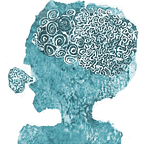Log #154 — Eno’s Forst Years
A big fan of both Cluster and Harmonia (the latter a short lived “supergroup” being the Cluster duo of Hans-Joachim Roedelius and Dieter Moebius plus Neu! guitarist Michael Rother) Brian Eno collaborated with both groups in the mid ‘70s, co-recording 3 albums.
Tracks and Traces was actually the first recorded in 1976 (just before Eno began work on Bowie’s Berlin albums) but oddly not released until 1997. Cluster & Eno followed in 1977 and a third After The Heat (not reviewed here) came in 1978.
When Brian Eno first alighted upon the Harmonia grouping he proclaimed that they were the “the most important band in the world”.
By then they had released their debut Musik Von Harmonia in 1974, and the follow up Deluxe in 1975 — both amazing original records combining the drive and motorik beats of Neu! with Kraftwerk electronics.
Krautrock would never reach such peaks again and in fact Harmonia didn’t try to either: these two outstanding records becoming the only studio albums to bear the Harmonia name alone.
Eno sought the musicians out at their studio hideaway in the rural town of Forst (on the German/Polish border 70 miles east of Berlin) and together they recorded sessions that would eventually make up Tracks and Traces which was first credited to Harmonia ’76 and then as Harmonia and Eno ‘76.
It remains odd that the compilation of these recordings would not see the light of day for 20 years as the eventual record makes a very strong collection with a lot more depth than the more celebrated Cluster & Eno that followed.
It has what you could call a commercial side and an experimental ambient side which has as a centrepiece a 15 minute Sometimes In Autumn, a wonderful evocative track similar to the extended drones on Eno’s later Ambient 1 album or Aphex Twin’s SAWII.
The beautiful album opener Welcome showcases the added guitar present in the Harmonia version of the group from Michael Rother. The track would have been at home on Eno’s classic pedal steel infused Apollo album.
Atmosphere has those lovely electronically treated hi-hats that inform so many Harmonia albums. It’s almost Kraftwerkian but much gentler.
Vamos Companeros is where I really first hear the Eno influence — it’s not one of his most inspired contributions reminiscent of some of his throwaway trifles of more recent years.
Lurnberg Heath has vocals (or more or less spoken word, from Eno):
Don’t get lost on Luneberg Heath
’Tis a real place, south of Hamburg.
Tracks and Traces is an excellent record that now stands belatedly alone and proud in the Harmonia discography.
The following year the group, minus Rother, reconvened to produce Cluster & Eno (the one with the famous microphone above a bush at dusk cover). Can bassist Holger Czukay also guested on the album.
Cluster & Eno is a lovely albeit slight record. I’d say it sounds to me like one part Cluster, two parts Eno. The tracks are mostly simple, usually composed of a theme of just three or four repeated notes, although most have hints of added strangeness which enhance the interest.
So for instance opening track Ho Remono is largely a gentle pulsing keyboard piece typical of Cluster and Harmonia but becomes increasingly more distorted as it progresses. Wermut introduces soft chord pads and Selange is lightweight fayre. One is the longest and most experimental track including odd sitar sounds.
My favourite track is Die Bunge which approaches the best of Cluster with fantastic otherworldly sounds, a heartbeat pulse, and a piano round that reminds me of Penguin Cafe Orchestra.
Eno went on his way after After The Heat but his endorsement and association with Berlin and its music, and particularly Cluster and Harmonia brought heightened attention and recognition to the groups and the whole Krautrock movement.
Cluster I / 71
Cluster II
Cluster Grosses Wasser
Cluster Cluster & Eno
Harmonia Musik Von Harmonia
Harmonia Tracks and Traces
Cluster’s Eno free Grosses Wasser came in 1979.
Interesting minimalist art graces the album cover. Is it a diving board or an aeroplane wing? The title translates as Big Water, suggesting it could equally show the ocean under an aeroplane wing, or a swimming pool under a diving board (albeit note the slight curve on the “horizon”).
Produced by ex-Tangerine Dream member Peter Baumann this album also ended a long association with engineer Conny Plank who had pretty much achieved group membership status since working with the duo since their Kluster debut in 1969.
The record featured a wider variety of styles including some wildly avant-garde material particularly on the extended side long title track which veers off on “Tago Mago Side 3 and 4 like” tangents. The rest of the album features shorter more beatey tracks quite distant from the ambient rural beauty of 1976’s classic Sowiesoso album.
It’s intriguing how Harmonia and Cluster are practically the same in personnel but do have tangibly different sounds. Personally I think the Harmonia albums are slightly ahead but then they only had two proper albums over which to maintain the standard whereas Cluster had a long and varied career (even being Kluster and Qluster during some of it!) not to mention all the Moebius and Roedelius solo albums and collaborations.
Where to start with this lot? Zuckerzeit, Deluxe, Sowiesoso, and Musik Von Harmonia are must-haves. To that I’d now add Tracks and Traces. Furthermore I’m sure I will discover more delights (albeit different ones) in the Cluster I and II albums but am yet to fully digest them.
